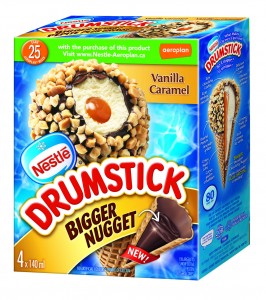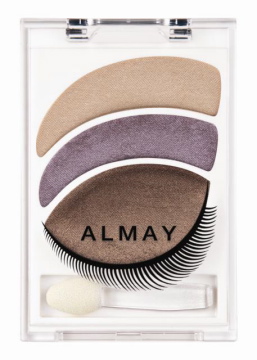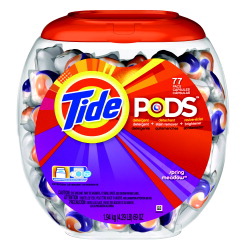
Unlocking the secrets of persuasive packaging
By Mark Baltazar, BrandSpark International
General BrandSpark International Consumer packaged goods CPG how to make a btter package trends in consumer purchasing what makes a good packageShoppers know - discover how leading marketer BrandSpark International turns packaging into 'great packaging'.
It has often been said that the only constant is change. In an environment where media fragmentation is increasingly a concern for marketers, it should not surprise the marketing community that brands are having a difficult time breaking through to consumers with a motivating message.
In recent years, the discipline of shopper marketing has become a hot topic in marketing circles around the world. One important component of a brand’s shopper marketing program is its packaging strategy. That’s right! Packaging is a strategic asset and it should be managed as a valuable component of a brand’s portfolio of assets.
In a recent BrandSpark International study, we found that only one-third of consumers knew exactly which brands they were going to buy on their next visit to the grocery store. While alarming for some, this statistic points to the importance of winning the on-shelf battle.
A products’ packaging is, in most cases, the last opportunity a marketer has to convince the shopper that its product is superior and worth buying compared to the many options stocked right beside it.
Packaging can make a difference in whether a shopper considers your product, buys it and even whether they are willing to pay a premium for it. It is important to note that while products are typically designed for the end user, packaging must be designed with an increased emphasis on the shopper.
What are the keys to success in the on-shelf battle?
For over 10 years we have been testing packaging with consumer packaged goods shoppers through custom studies as well as BrandSpark’s Annual Best New Product Awards program. This global database of insights spans nearly every category and has given us a window into understanding what truly makes packaging a persuasive form of marketing.
While an analysis of our global database reveals many packaging design best practices for each major category, we have identified eight universal truths that are applicable to any CPG (consumer packaged goods) category:
1. Less is more
How many times have you heard this before? It is fascinating today to still see thousands of product packages jam-packed with the entire brand story, all the features, some benefits and more.
This type of feature does not attract shoppers.
In fact, because shoppers are looking to complete their shopping trips as quickly as possible, packaging that is able to communicate the product benefits and the brand’s point of differentiation without having to be picked up will win the sale.
2. Benefits over features
It never fails, every time we test packaging concepts, the ones that highlight the product’s consumer benefit outperforms those that highlight only the features of the product.
As marketers, we sometimes have the tendency to tell consumers and shoppers alike as much as possible about the product.
Let’s face it—most shoppers don’t care.
Tell them how the product will help and benefit them. If you are launching a product under a strong brand with relatively high levels of trust in the category, rest assured that shoppers will believe you have designed a product that will deliver. Just make sure that the product does in fact deliver.
Leverage the back of the package to outline any key features relevant to your differentiated product story, but keep the front clean and clutter-free.
3. Benefit-driven design
The packaging design (shape, color, packaging features) must be able to clearly communicate and emphasize the product and brand benefit.
For example, in laundry care, the main consumer benefits are: remove stains, brightens colors and whitens whites. This would suggest packaging that is clean (free of design and copy clutter), bright (bright vibrant colors, which also ladders up to the benefits of ‘whitens’).
Shoppers recently evaluated the packaging for Schneiders line of Country Naturals, a line of natural meats. The study revealed its strength stemming from its simplicity and ‘natural’ colors – both providing a clear connection to the products benefits. One shopper even when on to explain why the package was so influential to her: “Simple label on package. Not multicolored ‘in-your-face’.”
 Ask yourself this, if you were to remove all the copy text from your packaging, what it would communicate? Would the design provide strong cues to the products benefits and points of differentiation?
Ask yourself this, if you were to remove all the copy text from your packaging, what it would communicate? Would the design provide strong cues to the products benefits and points of differentiation?
4. Keep it bright and vibrant
Think of your packaging as a billboard in Times Square. How is it going to stand out in the sea of billboards vying for your attention and dollars?
One of the most common attributes associated with strong persuasive packaging is bright and vibrant coloring. Packaging with bright colors tend to perform better than dull-colored packages, more often than not. This is your products chance to put its best foot forward. Don’t fall flat with dull, boring colors.
Let’s take ice cream for instance; one of the top performing food packages in our database in 2012 is Nestle’s Drumstick Bigger Nugget product. Aside from it being ice cream (indulgent foods tend to score higher on packaging tests), the packaging is successful at persuading shoppers because of its vibrant colors. Not only do the colors make it stand out in the frozen food aisle, but its vibrancy espouses associations of a fun and great-tasting dessert.
One shopper when on to say “I can practically taste it” when asked why the packaging was influential to her.
5. Brand breakthrough
If you were to flash your package in front of shoppers for less than a second, how many would be able to correctly recall your brand?
You must design packages so your brand clearly stands out.
This is especially true if you are launching new products under a brand with strong equity in the market place. Your brand asset needs to be leveraged to its full extent, as you will need all the leverage you can get in this crowded market place.
Imagine your target shopper in the aisle of a store being bombarded by thousands of packages, shelf-talkers, blades, and everything else being thrown at them. Your brand needs to be able to breakthrough the clutter and attract the attention of your target.
6. Attracting your target
This may seem like a ‘no-brainer’, but what a marketer thinks is attractive may not be what the target market thinks is attractive.
Make sure to test packaging with your core target and those of your expanded target before making significant investments in packaging production.
The degree of attractiveness is a strong contributor to a packages performance in the market place.
7. Be transparent
Keep in mind that shoppers operate with a healthy dose of skepticism when they are in the buying mindset.
They don’t easily forget the disappointment of opening a bag of chips only to find out that they are half full.
A glimpse of what is inside the package goes a long way to reassure the shopper that they are getting what they are paying for. Whether it’s a small window or fully transparent package, you are more likely to persuade shoppers to buy your product if you show them what’s inside.
Take Almay Intense I Smoky eye shadow from Revlon for example, one of the top-performing beauty packages. Not only is packaging used as a functional container for the product, but it also acts as a way to showcase to women how the product should be applied. Shoppers can easily see the color combinations and what order they should to be applied. This principle is exemplified by this shopper quote: “It makes it simple to figure out how to apply for those of us who are useless with makeup.”
8. Get points for multi-use packaging
While this is not the primary reason shoppers will buy your product, it definitely will tip the balance in your favor if your packaging can be used long after the product inside has been used.
One last thing: Walk the aisle to keep the shopper mindset
This is not a guideline for packaging design specifically, but such an important aspect of the ongoing process that it needs to be mentioned. Whether you are the brand manager spearheading the launch of a new product or the agency charged with designing breakthrough packaging to sell it, you must take the time to walk the aisles of a grocery store to experience what your target shoppers are experiencing. Take the opportunity to walk through aisles in categories beyond the one(s) you are responsible for to expose yourself to ideas that may be implemented in your own category.
Packages that are able to apply each of these principles will perform better than those that apply only a few.
One of the best performing packages we recently tested is that of Tide Pods. You can easily see that this packaging design applies each of the principles described here.
 While these principles may seem straightforward to some, after testing over 400 packages in North America in 2012 alone, we know that these principles are only being applied to some consumer package goods. There is a significant opportunity for brand leaders and their packaging agencies to leverage these persuasive techniques to win the in-store battle for a larger share of shoppers’ wallet.
While these principles may seem straightforward to some, after testing over 400 packages in North America in 2012 alone, we know that these principles are only being applied to some consumer package goods. There is a significant opportunity for brand leaders and their packaging agencies to leverage these persuasive techniques to win the in-store battle for a larger share of shoppers’ wallet.
Mark Baltazar is vice-president and leads the CPG practice at BrandSpark International, a leading brand, marketing and product innovation research company. The company’s comprehensive and innovative research approach learns how consumers think, why they act the way they do, and what its clients need to do about it. BrandSpark International owns and operates the 100% consumer-voted Best New Product Awards program globally.
Mark can be reached via e-mail at MBaltazar@brandspark.com; Twitter: @Mark_Baltazar. You can also visit the company website at www.brandspark.ca.
Advertisement

